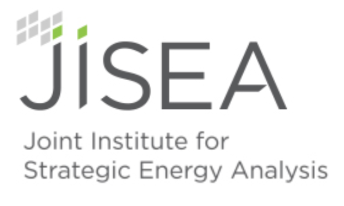Are there enough materials to cover li-ion batteries?
August 15, 2018 — This blog is an updated version of the 2016 blog we published about li-ion battery raw materials.
Lithium-ion batteries (LIB) are made from cells that consist of cathode, anode, electrolyte and separator. NMC—lithium nickel manganese cobalt oxide— and NCA—lithium nickel cobalt aluminum— are the most common cathode chemistries used in automotive LIB, and LCO—cobalt based lithium-ion, and LFP—lithium iron phosphate, are the most common cathode materials used in consumer electronics and other small battery-operated devices. Graphite is the most common material used in the LIB anodes. Synthetic graphite shares about 60% of the LIB anode market and about 36% of LIB anode are made from natural graphite. No noticeable changes in mining production were seen between 2015 and 2017. In 2017, we can see that mining of these key materials (not including aluminum) is still concentrated in 37 different countries.
In 2017, 110,000 metric tons of cobalt was produced globally (a 12.7% decrease from 2015), with about 59% coming from the Democratic Republic of Congo. About 60% of the cobalt deposits are shipped to China, where refining and purification take place and then shipped to other countries. China produced about two-thirds of the natural graphite in 2017 and contributes the largest share to the synthetic graphite market. Lithium is extracted from rock deposits (e.g., Spodumene deposits in Australia) and water brines rich in lithium salts (e.g., Argentina and Chile). In 2017 Australia produced about 44% and Chile produced 34% of the total global production of 43,000 tons (up 13% from 2016). 2.1 million tons of nickel was produced in 2017 with the following shares: Philippines 11%, Canada 10%, Russia, and Australia each accounted for 9% of the total nickel production. Globally, 16 million tons of manganese was extracted in 2017, primarily in South Africa (33%), China (16%) and Australia (14%). Total world smelter production of aluminum was about 60 million tons, 54% was produced in China, 6% in Russia, and 5% in Canada.
These elements are critical for plug-in electric and hybrid electric vehicle (xEV) battery manufacturing. Our estimates for material consumptions in xBV is shown below. In 2017, xBV used about 9% of the total world production of cobalt, about 15.6% of lithium, 1.3% of nickel and less than 1 percent of manganese. Synthetic and natural graphite are the main cathode materials used in li-ion batteries. 60% of li-ion batteries used synthetic graphite in the anode and 36% used natural graphite (Avicenne 2018). It’s expected that LIB will dominate the total cobalt and lithium markets in a few years. Actually, LIB (including batteries used in consumer electronics, energy storage, and transportation) consumed about half of cobalt and about 29% of lithium produced in 2017. The supply of some critical materials such as cobalt and lithium may fall short of the demand in the coming years unless we see a boost in the production which requires more investments in opening new mines and/or expanding current mine capacity.
The upside of this story is that, for most of these elements, the annual mine production accounts for less than 3% of the declared reserves.
Notes:
- Materials mined are reported in metric tons (tonnes).
- Total GWh of automotive lithium ion battery cells sold were 9.40 GWh in 2014, 20.35 GWh in 2015 and 31.3 GWh in 2016, and 55 GWh in 2017 based on vehicle sales data and average pack capacities of HEVs, PHEVs, and BEVs.
References:
- USGS mineral estimates for 2017.
- CRU. Edward Spencer. Cobalt Supply and Demand A Global Perspective. Cobalt Institute conference, 2017, Morocco
- BNEF. Clair Curry. Lithium-ion battery costs and market. BNEF, July 5, 2017
- Avicenne. Christophe Pillot. The rechargeable battery market and main trends 2016-2025. International battery seminar and exhibit. March 20, 2017. Fort Lauderdale, FL.
